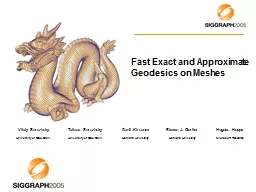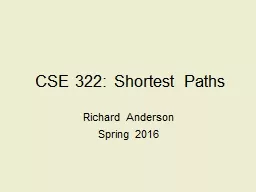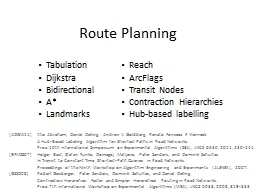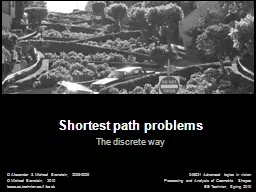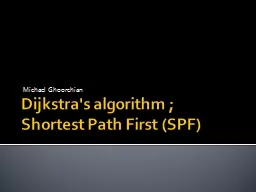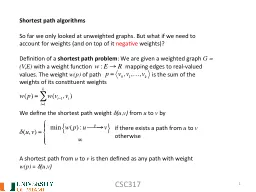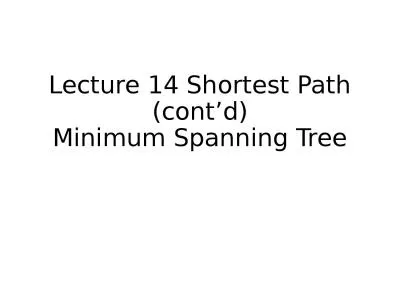PPT-Shortest Path Algorithm Lecture 20 CS2110. Spring 2019
Author : stefany-barnette | Published Date : 2019-11-01
Shortest Path Algorithm Lecture 20 CS2110 Spring 2019 1 Type shortest path into the JavaHyperText Filter Field A6 Implement shortestpath algorithm One semester mean
Presentation Embed Code
Download Presentation
Download Presentation The PPT/PDF document "Shortest Path Algorithm Lecture 20 CS..." is the property of its rightful owner. Permission is granted to download and print the materials on this website for personal, non-commercial use only, and to display it on your personal computer provided you do not modify the materials and that you retain all copyright notices contained in the materials. By downloading content from our website, you accept the terms of this agreement.
Shortest Path Algorithm Lecture 20 CS2110. Spring 2019: Transcript
Download Rules Of Document
"Shortest Path Algorithm Lecture 20 CS2110. Spring 2019"The content belongs to its owner. You may download and print it for personal use, without modification, and keep all copyright notices. By downloading, you agree to these terms.
Related Documents





